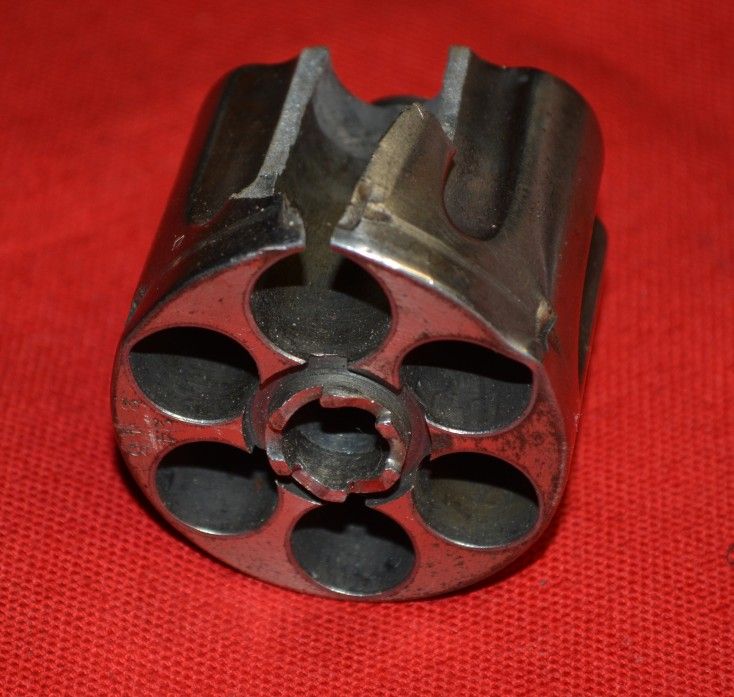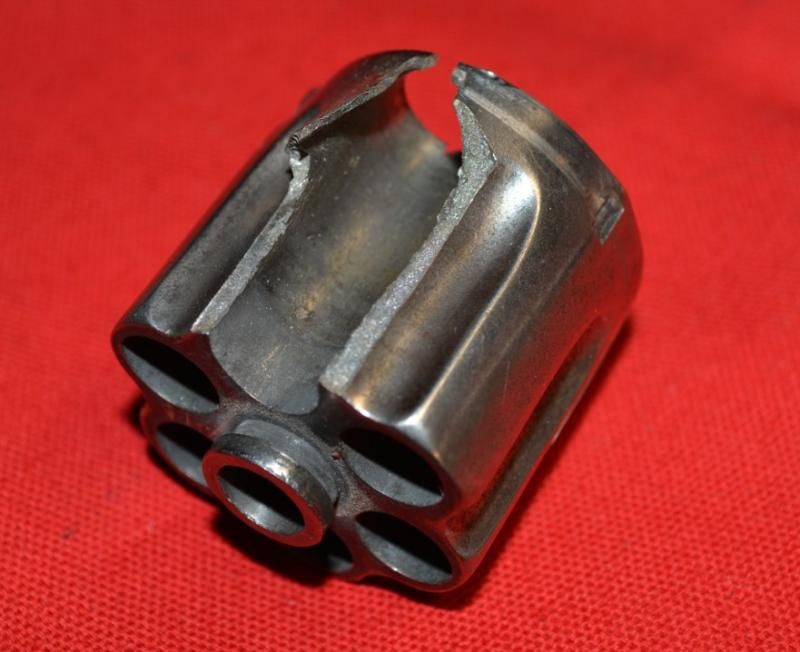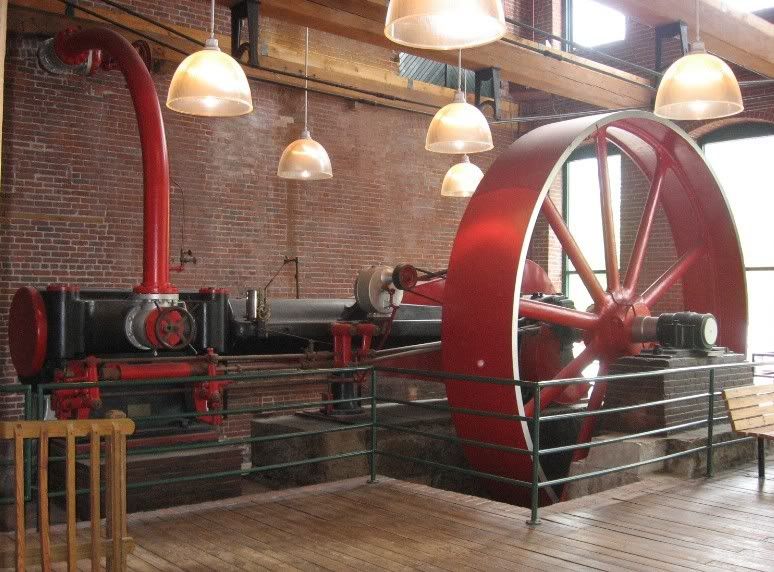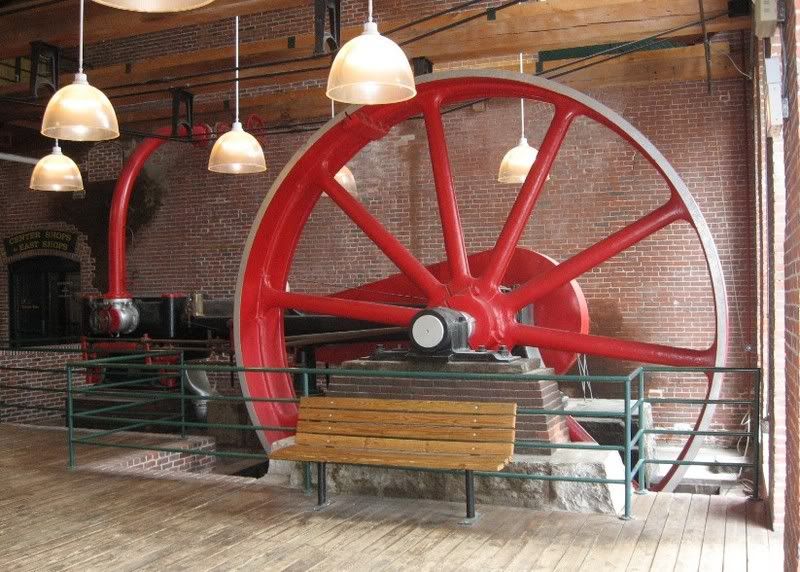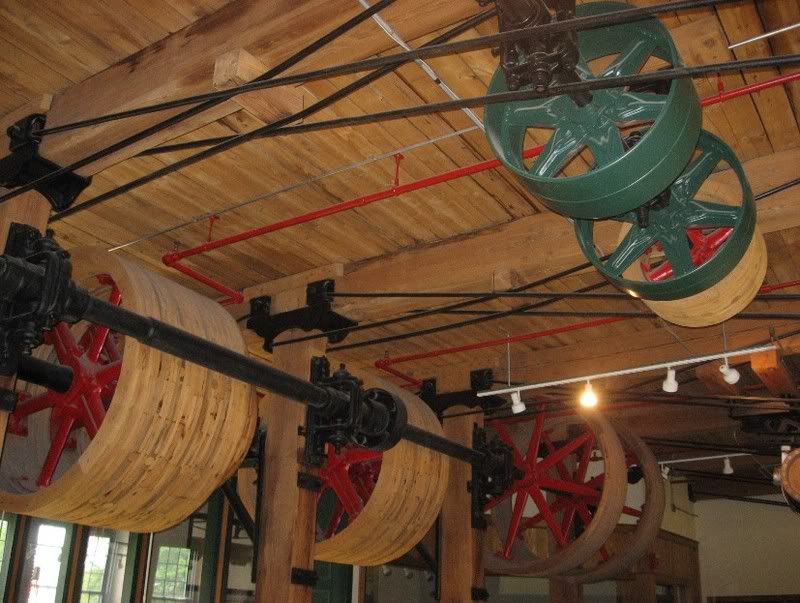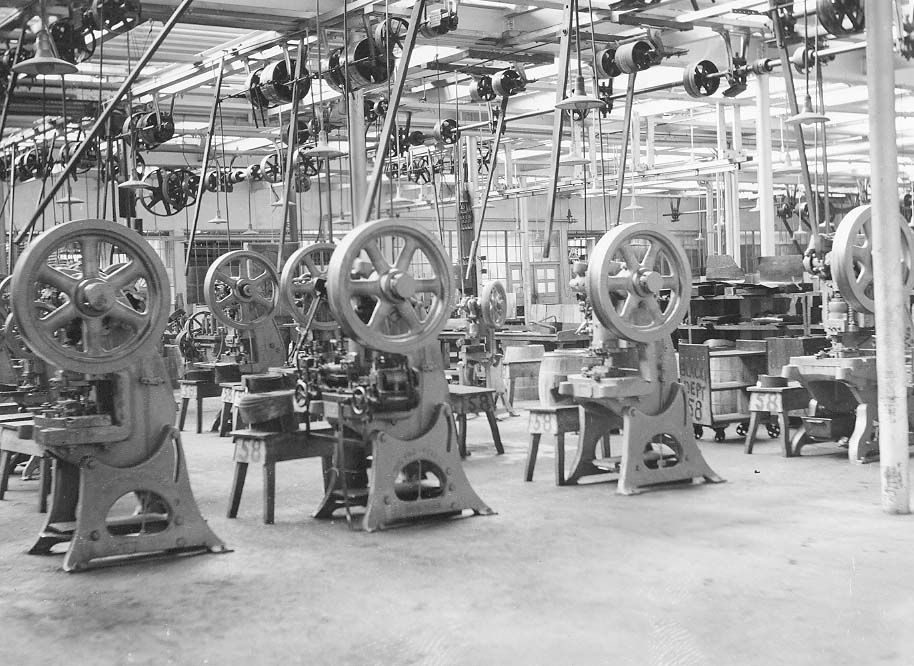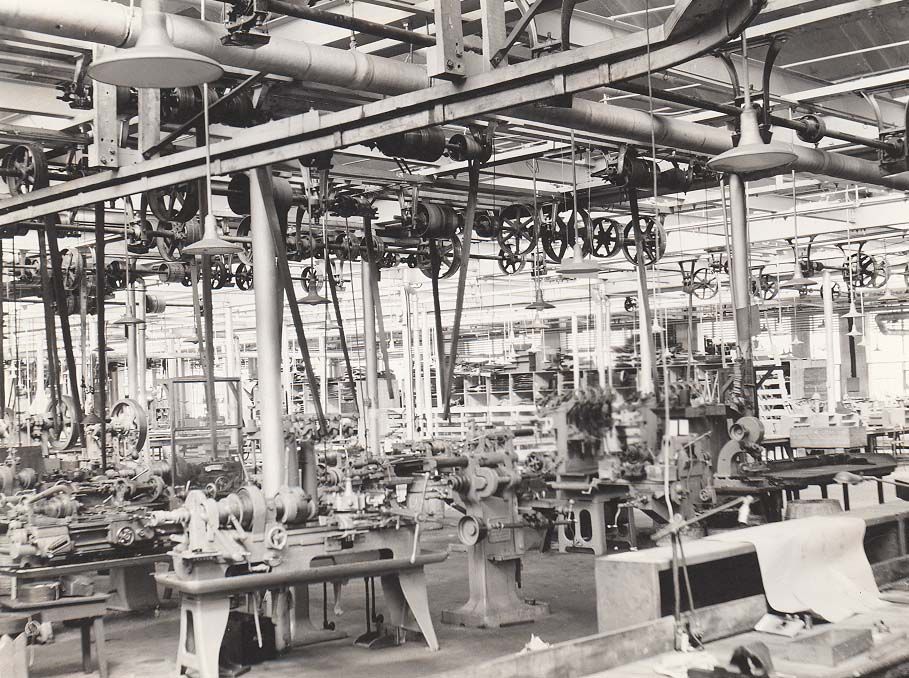Howdy
First of all, let's understand something.
With a revolver, it is the cylinder that must withstand the pressure generated when a cartridge fires. Not the frame, not the backstrap, and not the barrel. The cylinder is the pressure vessel that contains the pressure. Yes, the frame must withstand the battering of recoil, but the frame is not subjected to the pressure generated by a cartridge firing. Neither is the barrel. I'm a little bit hazy on this, but pressure is already leaking out of the barrel/cylinder gap as the bullet passes into the barrel. And pressure may be dropping as the bullet proceeds down the barrel. In any event, even with an old 'pencil barreled' S&W, the barrel wall is at least as thick as the cross section between the chambers of the cylinder. Yes, I have measured.
Regarding cylinder diameter, just grabbed an old 38 Military and Police (38 Special), made in 1939, a Model 10-5 (38 Special) made in 1964, a Model 13 (357 Mag) made in 1979 and my old Model 19-3 (357 Mag) made in 1975.
Guess what? With the exception of the Model 19, all had cylinders 1.440 in diameter. The Model 19 cylinder was slightly larger in diameter, 1.453. That's .013 larger in diameter. Not much.
Forget the length of the cylinders. That has nothing to do with how strong the cylinder is. Yes, means a 357 Mag cylinder will be long enough to chamber the longer Magnum rounds, but it has nothing to do with the strength of the cylinder.
The thinnest, and therefor weakest portion of any cylinder is not usually the web between chambers. It is usually the area under the cylinder locking slot. Between the bottom of the slot and the underlying chamber. Most cylinders tend to have the leading edge of this slot perfectly lined up with a chamber, pretty much guaranteeing that is the thinnest bit of metal on the cylinder. And if a cylinder ruptures, that is usually where the rupture starts. High speed photography has verified this. Rugers are different. Old Bill Ruger realized this was the weakest point of a revolver cylinder, so he moved them slightly away from the center line of the chambers. If you have a cylinder with an odd number of chambers, such as my seven shot Model 686, the slots are between the chambers, but with an even number of chambers, the slots are nicely lined up with the chambers.
Here is a perfect example. I am not clear any more if this old Merwin Hulbert cylinder was blown up by Black Powder or by Smokeless, but that is besides the point. Notice how the rupture started right at the locking slot, then propagated forward and back. Notice how the slots on either side of the chamber that failed are starting to fold in. A bit more powder and they would have failed too. That is very typical of a burst cylinder, three chambers get daylighted.
As the pieces of cylinder take off, they usually take the top strap with them.
I have seen lots of cylinders blown up this way. I seldom see a barrel blown up. If something is going to burst, it is usually the cylinder. If the barrel bursts too, it was a huge overload.
Not talking about rifles, shotguns or semi-auto pistols. Talking about revolvers.

